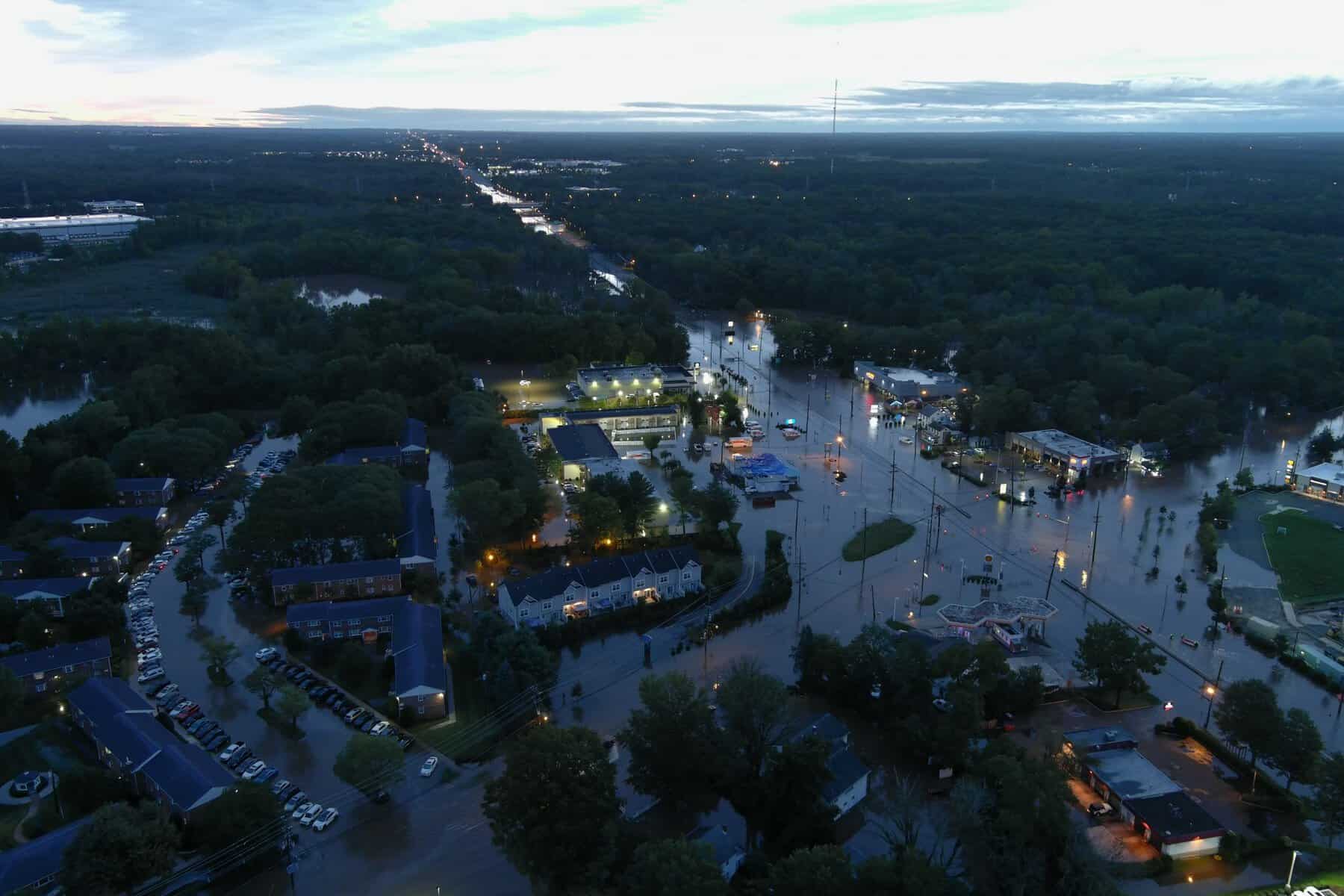Environmental organizations are urging Gov. Phil Murphy’s administration to implement New Jersey Protecting Against Climate Threats, or NJPACT, rules for flood hazard regulations and use of updated rainfall data as the state marks the one-year anniversary of Tropical Storm Ida on Sept. 1.
Organizations that include The Watershed Institute, Sierra Club and Delaware Riverkeeper Network are pushing for action on new stormwater and flood hazard rules that they expected the New Jersey Department of Environmental Protection (NJDEP) to adopt back in June to address flood maps and rainfall data.
“What NJDEP has come up with, which we were led to believe would be turned into an emergency rule back in May or June, would go a long way to ensuring that we don’t make the problem worse,” said Jim Waltman, executive director of The Watershed Institute.
The emergency rule proposed includes raising the base flood elevation by two feet above currently existing maps in inland areas, the use of updated rainfall data and the implementation of new stormwater requirements.
“For new construction, it updates the data in two important ways. One is the data on flood plains. So when we have a flood in many parts of the state including [Mercer County], the river can jump out of its banks and cause a lot of a damage,” Waltman said.
“The first thing we need to do is stop putting people in harm’s way with new construction by updating the flood maps that dictates where developments can and cannot be built.”
The proposal would update the data on precipitation and data that is only through 1999, Waltman said.
“[The] DEP now thinks in terms of a two-year storm, 10-year storm, and 100-year storm, but the data they use for analysis is way out of date,” he said.
“In the last 22 years, we are seeing bigger and bigger storms. When a new development goes in, it means they are going to have to create a stormwater mitigation system that is more aggressive and that handle bigger storms.”
NJPACT initiatives include modernizing environmental land use rules and facilitating climate resistance, according to the state agency.
Murphy, through an executive order issued in 2020, had required the NJDEP to reform regulations that would make the state more resilient to the impacts of climate change.
“We also need programs that adds stormwater mitigation to existing developments,” Waltman said. “In some extreme cases we need the government to continue doing what they have been doing, which is purchase homes and businesses that are really flood susceptible and move people out of harm’s way and restore those areas, so they can provide buffers and additional natural flood mitigation.”
Tropical Storm Ida saw a death toll of 30 people. AccuWeather estimated that Ida’s economic impact from Louisiana to New Jersey was $95 billion.
Shawn LaTourette, commissioner of the NJDEP, at a joint meeting of the Senate Environment and Energy Committee and the Assembly Environment and Solid Waste Committee earlier in August, said rainfall totals from the remnants of Ida exceeded prior monthly precipitation averages by “two to three times” in many places.
“These staggering rainfall totals, the bulk of which occurred over a six-hour period, caused creeks and rivers to rise overtop, and overwhelmed inadequate stormwater management systems with damaging and tragic results to public health, welfare, and safety across the state,” he said.
LaTourette noted that the flood risk extends beyond the boundaries mapped by Federal Emergency Management Agency (FEMA), with 38.5% of claims from Tropical Storm Henri and 31% of claims from Ida originating outside of the FEMA designated areas.
“The last data point used to determine flood risk is from 1999. The reality is that current methodologies for determining flood hazard areas and managing stormwater are inherently backward-looking,” he said.
“The precipitation data that drives development and infrastructure does not account for either current conditions or the expected impacts of climate change on precipitation events.”
The NJDEP would update environmental land use rules under a reform initiative, which is a component of NJPACT, called Resilient Environments and Landscapes [REAL], LaTourette said.
New Jersey Business Organizations
Earlier this summer, 19 business organizations, which included the New Jersey Business and Industry Association [NJBIA] and Princeton Mercer Regional Chamber of Commerce pressed Murphy about halting the NJDEP’s use of the emergency rule process to implement a flood plan that is a component of the NJPACT proposed reforms.
“If adopted, this rule would adversely impact countless [of] sorely needed development and infrastructure projects that are being planned or have already been designed and engineered at great cost to both the private and public sectors,” the business organizations wrote in a June letter to Murphy.
“Our request, not to advance this emergency rulemaking, is based solely on the process being used.”
The organizations pointed to three primary objections they had with the filing of an emergency rule by the NJDEP.
“One, no imminent peril exists. Two, the DEP’s intent to limit the grandfather provisions will have dire economic consequences on potentially thousands of projects, including those involving infrastructure, low-income housing, and those in economically disadvantaged communities,” they wrote in the letter.
“Finally, while flood maps may need to be updated, the primary problem, as evidenced by Tropical Storm Ida, is existing inadequate stormwater facilities, not flood mapping. This emergency rule is addressing the wrong problem with the wrong solution.”
The businesses also said there is an unknown about how many areas will be “impacted, how many projects will be affected, or how it will impact infrastructure, low-income housing, and redevelopment projects that are policy priorities.”

